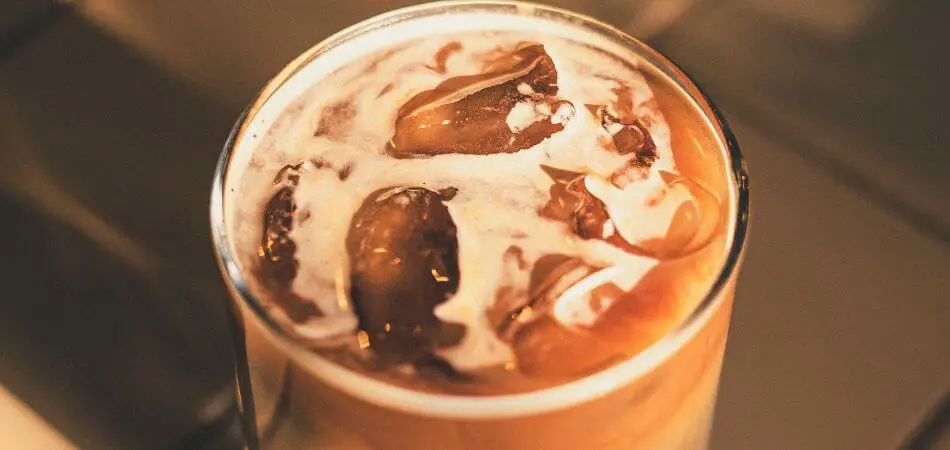How to Make Iced Coffee: The Ultimate Guide for Coffee Lovers
If you’ve ever wanted to craft iced coffee that stands up to the quality of your go-to café, you’ve come to the perfect spot. Iced coffee isn’t just a cool, refreshing beverage—it’s a way to elevate your everyday routine. Whether you’re a coffee aficionado or just enjoy the occasional cup, mastering how to make iced coffee at home can help you save money while giving you the freedom to tailor your drink exactly to your taste.
In this comprehensive guide, we’ll walk you through everything you need to know—from selecting the best coffee beans and mastering brewing methods to fixing common mistakes and experimenting with unique, creative recipes. Ready to dive in? Let’s brew something amazing!

Why Learn How to Make Iced Coffee at Home?
Learning how to make iced coffee at home has several benefits:
- Cost-Effective: Skip the expensive café prices.
- Customizable: Adjust the strength, sweetness, and flavor to your liking.
- Convenient: Enjoy iced coffee anytime without leaving your house.
- Healthier: Control the ingredients to avoid excess sugar or artificial additives.
What You’ll Need to Make Iced Coffee
Before we dive into the steps, let’s gather the essentials for how to make iced coffee:
1. Coffee Beans
- Type: Medium or dark roast beans are ideal for iced coffee.
- Brands: Popular options include Starbucks Coffee Beans, Lavazza Super Crema, and Peet’s Coffee.
- Grind: Freshly ground beans are best. Use a coarse grind for French press or cold brew, and a medium grind for drip coffee.
Pro Tip: If you don’t have a grinder, consider investing in a high-quality one like the Baratza Encore Coffee Grinder.
2. Water
- Use filtered water for the best taste. A Brita Water Filter Pitcher is a great option.
3. Ice Cubes
- Regular ice cubes or coffee ice cubes (to prevent dilution).
4. Milk or Cream (Optional)
- Dairy: Whole milk, half-and-half, or cream.
- Non-Dairy: Almond Milk, Oat Milk, Soy Milk, or Coconut Milk.
5. Sweeteners
- Sugar, honey, agave syrup, or flavored syrups like Torani Vanilla Syrup or Monin Caramel Syrup.
6. Brewing Equipment
- Drip Coffee Maker: Try the Cuisinart DCC-3200 for a reliable option.
- French Press: The Bodum French Press is a fan favorite.
- Cold Brew Maker: Check out the Takeya Cold Brew Coffee Maker.
7. Glassware
- Tall glasses or mason jars for serving. These Libbey Glass Mason Jars are perfect for iced coffee.

Step-by-Step Guide on How to Make Iced Coffee
1. Choose the Right Coffee Beans
The quality of your coffee beans is crucial when learning how to make iced coffee. Here’s what to consider:
- Roast Level: Medium or dark roast beans have a richer flavor that stands up well to ice.
- Origin: Beans from Colombia, Ethiopia, or Brazil are popular choices.
- Freshness: Always use freshly roasted beans and grind them just before brewing.
Pro Tip: Experiment with single-origin beans like Ethiopian Yirgacheffe for unique flavor profiles.
2. Brew Your Coffee
There are several ways to brew coffee when learning how to make iced coffee. Let’s explore the most popular methods:
Method 1: Drip Coffee Maker
- Use 1.5 times the amount of coffee grounds you’d normally use for a stronger brew.
- Brew as usual and let the coffee cool to room temperature.
Method 2: French Press
- Add coarse coffee grounds to the French press.
- Pour hot water (just below boiling) over the grounds.
- Steep for 4 minutes, then press down the plunger.
- Let the coffee cool.
Method 3: Cold Brew
- Combine coarse coffee grounds and cold water in a jar (1:4 ratio).
- Steep in the fridge for 12-24 hours.
- Strain the coffee using a fine mesh or cheesecloth.
Pro Tip: Cold brew is less acidic and smoother, making it a great option for how to make iced coffee.
3. Cool the Coffee
Once your coffee is brewed, let it cool to room temperature. You can speed up the process by placing it in the fridge for 20-30 minutes.
Pro Tip: Avoid pouring hot coffee directly over ice, as it can melt the ice quickly and dilute the flavor.
4. Prepare Your Glass
Fill a tall glass with ice cubes. For an extra touch, use coffee ice cubes (frozen coffee instead of water) to prevent dilution.
5. Assemble Your Iced Coffee
- Pour the cooled coffee over the ice.
- Add milk, cream, or a dairy-free alternative if desired.
- Sweeten to taste with sugar, simple syrup, or flavored syrups like Torani Vanilla Syrup or Monin Caramel Syrup.
Pro Tip: Add a pinch of salt to reduce bitterness and enhance the flavor.
6. Stir and Enjoy
Give your iced coffee a good stir to mix all the ingredients. Add a straw, and enjoy your refreshing homemade iced coffee!

Advanced Tips for Perfect Iced Coffee
1. Use Coffee Ice Cubes
Freeze leftover coffee in ice cube trays. This prevents your iced coffee from becoming watery as the ice melts.
2. Experiment with Flavors
- Syrups: Torani Vanilla Syrup, Monin Caramel Syrup, or DaVinci Hazelnut Syrup.
- Spices: Cinnamon, nutmeg, or cardamom.
- Extracts: Almond, coconut, or orange.
3. Try Different Brewing Methods
- AeroPress: Makes a smooth and concentrated coffee. Check out the AeroPress Coffee Maker.
- Pour-Over: Produces a clean and bright flavor. The Hario V60 is a great choice.
- Espresso: Use a shot of espresso for a stronger iced coffee.
4. Sweeten Strategically
- Simple Syrup: Dissolves easily in cold drinks.
- Condensed Milk: Adds creaminess and sweetness.
- Flavored Syrups: Enhance the taste with unique flavors.

Creative Iced Coffee Recipes
1. Vanilla Sweet Cream Iced Coffee
- Add a splash of Torani Vanilla Syrup and a dollop of sweet cream to your iced coffee.
2. Mocha Iced Coffee
- Mix in Hershey’s Chocolate Syrup or cocoa powder for a rich, chocolatey flavor.
3. Coconut Iced Coffee
- Use Thai Coconut Milk and a touch of Monin Coconut Syrup for a tropical twist.
4. Salted Caramel Iced Coffee
- Drizzle Torani Caramel Syrup and add a pinch of sea salt for a sweet-and-salty treat.
Troubleshooting Common Issues
1. My Iced Coffee is Too Weak
- Brew your coffee stronger by using more coffee grounds or less water.
- Avoid over-diluting with ice by using coffee ice cubes.
2. My Iced Coffee is Too Bitter
- Use high-quality beans and avoid over-extraction.
- Add a pinch of salt or a sweetener to balance the bitterness.
3. My Iced Coffee is Watery
- Use coffee ice cubes instead of regular ice cubes.
- Cool your coffee completely before adding ice.
FAQs About How to Make Iced Coffee
1. What’s the Difference Between Iced Coffee and Cold Brew?
- Iced Coffee: Brewed hot and then cooled, resulting in a brighter, more acidic flavor.
- Cold Brew: Steeped in cold water for 12-24 hours, resulting in a smoother, less acidic taste.
2. Can I Use Instant Coffee for Iced Coffee?
Yes! Simply dissolve instant coffee in a small amount of hot water, then add cold water and ice. It’s a quick and easy alternative.
3. How Do I Make Iced Coffee Less Bitter?
- Use high-quality beans.
- Avoid over-extraction by brewing for the right amount of time.
- Add a pinch of salt or a sweetener to balance the bitterness.
4. How Long Does Iced Coffee Last?
Store brewed coffee in the fridge for up to 3-4 days. Cold brew can last up to 2 weeks when stored properly.
Related Coffee Recipes to Try
Conclusion
Now that you know how to make iced coffee at home, the possibilities are endless. Whether you prefer a classic iced coffee or a creative flavored version, this guide has everything you need to become your own barista. With a little practice, you’ll be sipping on café-quality iced coffee in no time. Give it a try, and don’t forget to share your creations with us in the comments or on social media!
Ready to master how to make iced coffee? Grab your favorite coffee beans and start brewing! Check out the recommended products below to get started:
- Starbucks Coffee Beans
- Bodum French Press
- Torani Vanilla Syrup
- Takeya Cold Brew Coffee Maker
Let us know how your iced coffee turns out in the comments below. Cheers! ☕
{ “@context”: “https://schema.org”, “@type”: “Article”, “headline”: “How to Make Iced Coffee: The Ultimate Guide for Coffee Lovers”, “description”: “Learn how to make iced coffee at home with this ultimate guide. Discover step-by-step instructions, tips, and creative recipes for the perfect iced coffee.”, “image”: “https://coffeetalkies.com/wp-content/uploads/2024/10/How-to-Make-Iced-Coffee-5.jpg?ezimgfmt=ng:webp/ngcb1”, “author”: { “@type”: “Person”, “name”: “Sadaf Hasan” }, “publisher”: { “@type”: “Organization”, “name”: “Coffee Talkies”, “logo”: { “@type”: “ImageObject”, “url”: “https://coffeetalkies.com/wp-content/uploads/2024/10/coffee-talkies-logo.png” } }, “datePublished”: “2024-10-01”, “dateModified”: “2024-10-01”, “mainEntityOfPage”: { “@type”: “WebPage”, “@id”: “https://coffeetalkies.com/how-to-make-iced-coffee/” } } { “@context”: “https://schema.org”, “@type”: “FAQPage”, “mainEntity”: [ { “@type”: “Question”, “name”: “What’s the difference between iced coffee and cold brew?”, “acceptedAnswer”: { “@type”: “Answer”, “text”: “Iced coffee is brewed hot and then cooled, resulting in a brighter, more acidic flavor. Cold brew is steeped in cold water for 12-24 hours, resulting in a smoother, less acidic taste.” } }, { “@type”: “Question”, “name”: “Can I use instant coffee for iced coffee?”, “acceptedAnswer”: { “@type”: “Answer”, “text”: “Yes! Simply dissolve instant coffee in a small amount of hot water, then add cold water and ice. It’s a quick and easy alternative.” } }, { “@type”: “Question”, “name”: “How do I make iced coffee less bitter?”, “acceptedAnswer”: { “@type”: “Answer”, “text”: “Use high-quality beans, avoid over-extraction, and add a pinch of salt or a sweetener to balance the bitterness.” } }, { “@type”: “Question”, “name”: “How long does iced coffee last?”, “acceptedAnswer”: { “@type”: “Answer”, “text”: “Store brewed coffee in the fridge for up to 3-4 days. Cold brew can last up to 2 weeks when stored properly.” } } ] } { “@context”: “https://schema.org”, “@type”: “HowTo”, “name”: “How to Make Iced Coffee”, “description”: “A step-by-step guide to making delicious iced coffee at home.”, “image”: “https://coffeetalkies.com/wp-content/uploads/2024/10/How-to-Make-Iced-Coffee-5.jpg?ezimgfmt=ng:webp/ngcb1”, “totalTime”: “PT15M”, “supply”: [ “Coffee beans”, “Water”, “Ice cubes”, “Milk or cream (optional)”, “Sweetener (optional)”, “Brewing equipment (drip coffee maker, French press, or cold brew maker)” ], “tool”: [ “Coffee grinder”, “French press or drip coffee maker”, “Tall glass” ], “step”: [ { “@type”: “HowToStep”, “text”: “Choose the right coffee beans. Medium or dark roast beans are ideal for iced coffee.”, “image”: “https://coffeetalkies.com/wp-content/uploads/2024/10/coffee-beans.jpg” }, { “@type”: “HowToStep”, “text”: “Brew your coffee using a drip coffee maker, French press, or cold brew method.”, “image”: “https://coffeetalkies.com/wp-content/uploads/2024/10/brewing-coffee.jpg” }, { “@type”: “HowToStep”, “text”: “Let the coffee cool to room temperature or refrigerate for 20-30 minutes.”, “image”: “https://coffeetalkies.com/wp-content/uploads/2024/10/cooling-coffee.jpg” }, { “@type”: “HowToStep”, “text”: “Fill a tall glass with ice cubes.”, “image”: “https://coffeetalkies.com/wp-content/uploads/2024/10/ice-cubes.jpg” }, { “@type”: “HowToStep”, “text”: “Pour the cooled coffee over the ice.”, “image”: “https://coffeetalkies.com/wp-content/uploads/2024/10/pouring-coffee.jpg” }, { “@type”: “HowToStep”, “text”: “Add milk, cream, or a dairy-free alternative if desired.”, “image”: “https://coffeetalkies.com/wp-content/uploads/2024/10/adding-milk.jpg” }, { “@type”: “HowToStep”, “text”: “Sweeten to taste with sugar, simple syrup, or flavored syrups.”, “image”: “https://coffeetalkies.com/wp-content/uploads/2024/10/sweetening-coffee.jpg” }, { “@type”: “HowToStep”, “text”: “Stir well and enjoy your homemade iced coffee!”, “image”: “https://coffeetalkies.com/wp-content/uploads/2024/10/enjoying-coffee.jpg” } ] } { “@context”: “https://schema.org”, “@type”: “WebPage”, “name”: “How to Make Iced Coffee”, “url”: “https://coffeetalkies.com/how-to-make-iced-coffee/”, “description”: “Learn how to make iced coffee at home with this ultimate guide. Discover step-by-step instructions, tips, and creative recipes for the perfect iced coffee.”, “image”: “https://coffeetalkies.com/wp-content/uploads/2024/10/How-to-Make-Iced-Coffee-5.jpg?ezimgfmt=ng:webp/ngcb1”, “mainEntity”: { “@type”: “Article”, “headline”: “How to Make Iced Coffee: The Ultimate Guide for Coffee Lovers”, “author”: { “@type”: “Person”, “name”: “Sadaf Hasan” }, “publisher”: { “@type”: “Organization”, “name”: “Coffee Talkies”, “logo”: { “@type”: “ImageObject”, “url”: “https://coffeetalkies.com/wp-content/uploads/2024/10/coffee-talkies-logo.png” } }, “datePublished”: “2024-10-01”, “dateModified”: “2024-10-01” } } { “@context”: “https://schema.org”, “@type”: “Recipe”, “name”: “How to Make Iced Coffee”, “description”: “Learn how to make delicious iced coffee at home with this easy step-by-step recipe. Perfect for coffee lovers looking for a refreshing drink.”, “image”: “https://coffeetalkies.com/wp-content/uploads/2024/10/How-to-Make-Iced-Coffee-5.jpg?ezimgfmt=ng:webp/ngcb1”, “author”: { “@type”: “Person”, “name”: “Sadaf Hasan” }, “datePublished”: “2024-10-01”, “prepTime”: “PT5M”, “cookTime”: “PT10M”, “totalTime”: “PT15M”, “keywords”: “how to make iced coffee, iced coffee recipe, homemade iced coffee”, “recipeYield”: “1 serving”, “recipeCategory”: “Beverage”, “recipeCuisine”: “International”, “nutrition”: { “@type”: “NutritionInformation”, “calories”: “50 kcal”, “sugarContent”: “5 g”, “fatContent”: “1 g” }, “recipeIngredient”: [ “2 tablespoons coffee grounds (medium or dark roast)”, “1 cup water (filtered)”, “1 cup ice cubes”, “2 tablespoons milk or cream (optional)”, “1-2 teaspoons sugar or sweetener (optional)”, “Flavored syrups (optional)” ], “recipeInstructions”: [ { “@type”: “HowToStep”, “text”: “Brew your coffee using a drip coffee maker, French press, or cold brew method. Use 1.5 times the amount of coffee grounds for a stronger brew.” }, { “@type”: “HowToStep”, “text”: “Let the coffee cool to room temperature or refrigerate for 20-30 minutes.” }, { “@type”: “HowToStep”, “text”: “Fill a tall glass with ice cubes.” }, { “@type”: “HowToStep”, “text”: “Pour the cooled coffee over the ice.” }, { “@type”: “HowToStep”, “text”: “Add milk, cream, or a dairy-free alternative if desired.” }, { “@type”: “HowToStep”, “text”: “Sweeten to taste with sugar, simple syrup, or flavored syrups.” }, { “@type”: “HowToStep”, “text”: “Stir well and enjoy your homemade iced coffee!” } ], “aggregateRating”: { “@type”: “AggregateRating”, “ratingValue”: “4.8”, “reviewCount”: “120” }, “video”: { “@type”: “VideoObject”, “name”: “How to Make Iced Coffee”, “description”: “Watch this video to learn how to make iced coffee at home.”, “thumbnailUrl”: “https://coffeetalkies.com/wp-content/uploads/2024/10/How-to-Make-Iced-Coffee-5.jpg?ezimgfmt=ng:webp/ngcb1”, “contentUrl”: “https://www.youtube.com/watch?v=example”, “embedUrl”: “https://www.youtube.com/embed/example”, “uploadDate”: “2024-10-01” } }






